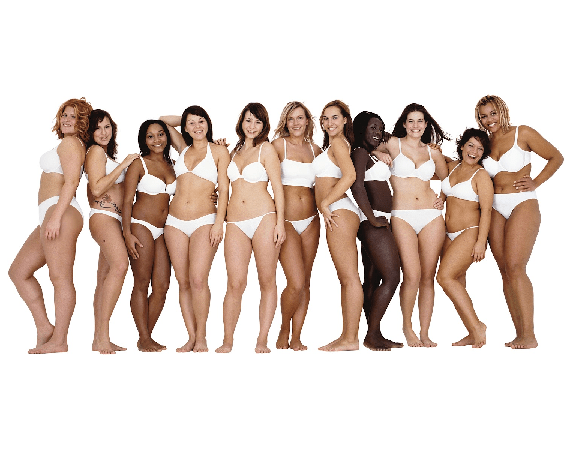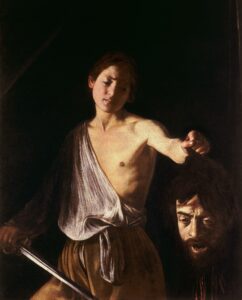The beauty industry is one that has dominated in terms of sales and marketing for decades. It is a field that many are attracted to, yet few take the time to understand how their projected images affect one’s self-image. Though, as many say, “beauty is in the eye of the beholder,” one company realized that beauty lies within all.
In 2004, Dove launched the Campaign for Real Beauty, which was meant to broaden the narrow view of beauty within society.1 Before the release of the Campaign for Real Beauty, Dove attempted to highlight the creamy, moisturizing feel that defined the soap brand by emphasizing the beauty in pampering oneself – oftentimes depicting a beautiful, thin woman, with red lipstick and painted nails. Taking a drastic risk in their marketing strategy, Dove sought to promote a new idea of beauty; they did so by using real women whose looks and weight were far different from the typical model—and it was a smashing success.2 But this success would not have been possible without the creative minds behind the project and the annihilating of what society says beauty should be.

For many decades, the beauty industry has marketed its products with images of the newest, most glamorous, most chic new looks for individuals to try. People love the process of making themselves feel beautiful, and tend to jump at the newest, most popular products to arrive in the market. Specifically, the beauty industry targets women by appealing to the “ideal” image of beauty that is popular at that particular point in time. The most used approach they take is in convincing women that what is most important about them is the way they look. The most common ideal of beauty (especially prevalent since the post-war 1950s) dominant in the minds of many today, is a tall, thin woman who is caked with flawless makeup with silky hair and a straight, white smile. Beauty is not only something that women feed off of, but it has become something people look to to define their own self-confidence. Magazines, games, and social media alike are doused with unrealistic portrayals of beauty. Though there is a high awareness of the impact that media’s idealization of thinness has on women’s health, the industry remains strict to a narrow range of cultural images of attractiveness.3 Before the Dove Campaign for Real Beauty was launched, women, for many years, became used to seeing themselves as being “less-than” that of others. In adapting to change, the beauty industry follows closely the shifting trends of the times. For example, the 1950s was characterized by rolled bangs and winged eyeliner, the 1980s by bold eye shadow and crimped hair, and the 2000s by fake tans and lip gloss.4 In following these trends, women have long adapted to the societal standard of beauty in an attempt to better fit in. These stereotypical views of the ideal woman is what not only feeds the minds of young girls, but it wrecks the body images of millions of women who don’t see themselves as beautiful. In general, the beauty industry tends to feed the minds of many with their own definition of beauty.
One of the key creators and marketing geniuses behind the Campaign for Real Beauty was Joah Santos. As the Chief Creative Officer and founder of NYLON (a multi-platform media company), Santos paved the way for the creative advertising techniques that were used in a multitude of famous ads. Santos became widely known after his making of the P.O.V. (purpose, originality, value) marketing strategy, which was first used to create the Dove Campaign for Real Beauty.5 Within this strategy, he hoped to simplify marketing by giving value to the content of an ad. Content, he explains, gives a story to the brand; the effect of the story is what matters most. There must be a link between a product and the brand’s purpose in order for the technique to make sense. This, in turn, allows the company to build up its credibility.
His focus on evolving a brand based on its story was revolutionary—he set the stage for perhaps the greatest campaign of the twenty-first century. In addition to this, Santos’ ideas led to the Dove Real Beauty Sketches, which was a short film led by Hugo Viega. Viega, a Portuguese copywriter, focused on the concept of risk-taking in his creative, rather than figuring out what would best sell. In his commercial campaign for Dove, Viega hoped to show women that they are more beautiful than they think. To do so, he had various women describe themselves to a sketch artist who could not see them. The sketch artist then drew images of those same women, as described by strangers who had met them the day before. When these images were compared, the stranger’s image was by far more flattering and accurate for every woman who participated. Not only did this video go viral in 2013, but it is said to be one of the most powerful and thought-provoking films Dove has ever released.6 These two men had an enormous role within the Campaign for Real Beauty, with their “test-and-learn” strategy taking them a long way. Ultimately, they sought to express to women that their imperfections do not define who they are. Without them, the campaign would not have grown into what it is today.
The conversation of beauty in today’s society is one that is standardized across the board. The projected images of beauty within media and advertisements alike are what influence the way women see themselves in relation to the rest of the world. These idealized images that are prevalent in advertising are what make consumers feel that they must strive for some unattainable goal of beauty. This, in turn, makes them feel threatened in a way that has a negative effect on their self-esteem.7
Humans in general have a tendency to compare some aspect of the self to that of others, and this is known as social comparison. Social comparisons take place when individuals are heavily influenced by their social environment.8 Projecting ultra-thin models as a beauty ideal comes with its costs. The general conclusion among researchers is that the exposure to thinness-depicting media is related to greater body dissatisfaction, lower body self-esteem, and self-objectification, especially among young girls.9 Social comparison allows one to understand the projected symbols from media, and how they tend to lower women’s self-assurance in society. The advertising industry routinely utilizes the theory to sell beauty products.10 Men, too, are affected by such standards of beauty; seeing such projected attributes in media, men feel as if they cannot reach those standards, ultimately becoming dissatisfied with their own image.11 Societal standards of beauty have been, and will likely always be, a driving factor in the way individuals view themselves.

In 2004, Dove, in conjunction with the Downing Street Group (a research consulting firm), decided to conduct a massive research experiment to verify the hypothesis that women tend to view themselves as less than optimal. For this, leaders of the Campaign for Real Beauty traveled to ten different countries, surveying a total of three thousand women to find out how they felt about their own appearance. In confirmation of Dove’s guess, the research concluded that merely two percent of women define themselves as being beautiful, and only nine percent described themselves as being attractive.12
The Dove Campaign for Real Beauty was one that was groundbreaking, revolutionary, and bold. Dove began as a company creating moisturizing beauty bars, and evolved into one that insists that women be comfortable in their own skin. This campaign not only encouraged confidence, but it widened the narrow view of what is considered “beautiful” by societal standards (i.e. thinness, fair skin, etc.).
Feminism (the advocacy of women’s equality in society) is a concept that is present in the Dove Campaign for Real Beauty. From the 1960s on, women have empowered themselves to advocate for their own definitions of beauty, not allowing a patriarchal society to define them. For too long, women were told to accept their roles in society and live domestic lives as housewives and caretakers. There has been a long effort to include emancipatory ideals in marketing campaigns, most often met with little transformation.13 To put it simply, the fight for all body types, skin tones, and hair types to be expressed equally in media campaigns has been long fought, yet most advertisers stick to stereotype models, lacking diversified representation. Before the 1960s, gender roles were reinforced by mass media and popular culture. However, after WWII, because women made up a large percentage of the postwar labor force, things began to change for women and their roles in society.14 Even in the 1950s, women began to take on new roles in society even as they were encouraged to play traditional roles. These new roles represented the beginning of women breaking away from the conformist ideals of that time period.
In relation to the twenty-first century, women have continued to advocate equality via feminist activism. The Dove Campaign for Real Beauty is a prime example of this, as it pulls away from the commonplace, stereotypical view of women in society today. In using “feminist consumerism,” the Campaign for Real Beauty has the power to disrupt gender norms with its engagement in grassroots activism, as well as in its critiques of the beauty industry.15

In all, the Dove Campaign for Real Beauty is one that has set the stage for groundbreaking change in the minds of women in today’s society. Not only have some beauty companies restructured their use of models and media strategies, but the idea of using “real women” has been popularized. In kicking off a conversation of women’s roles in society’s standards of beauty, the campaign reframed the very idea of female attractiveness. The empowerment of women to be confident in their own skin is what drove this campaign; it not only celebrated the natural beauty of women around the world, but it reinforced the idea that societal standards do not define who you are.
- Encyclopedia of Major Marketing Campaigns, 2007, s.v. “Unilever PLC,” by Jonathan Kolstad and Judson Knight. ↵
- Encyclopedia of Major Marketing Campaigns, 2007, s.v. “Unilever PLC,” by Jonathan Kolstad and Judson Knight. ↵
- Sarah Grogan, Body Image : Understanding Body Dissatisfaction in Men, Women and Children (London: Routledge, 2008), 11-12. ↵
- Fashion, 2015, s.v. “Beauty by the Decade: The Hair and Makeup Trends We Got from Each Era,” by Sarah Harris. ↵
- Revolvy, 2013, s.v. “Dove Real Beauty Sketches.” ↵
- Revolvy, 2013, s.v. “Dove Real Beauty Sketches.” ↵
- Encyclopedia of Gender in Media, 2012, s.v. “Social Comparison Theory,” by Neil Alperstein. ↵
- Encyclopedia of Gender in Media, 2012, s.v. “Social Comparison Theory,” by Neil Alperstein. ↵
- Kimberly Bissell and Amy Rask, “Real women on real beauty: Self-discrepancy, internalisation of the thin ideal, and perceptions of attractiveness and thinness in Dove’s Campaign for Real Beauty,” International Journal Of Advertising 29, no. 4 (November 2010): 644. ↵
- Donnalyn Pompper, Rhetoric of femininity: female body image, media, and gender role stress/conflict (Lanham: Lexington Books, 2017), 15. ↵
- Encyclopedia of Gender in Media, 2012, s.v. “Social Comparison Theory,” by Neil Alperstein. ↵
- Encyclopedia of Major Marketing Campaigns, 2007, s.v. “Unilever PLC,” by Jonathan Kolstad and Judson Knight. ↵
- Josée Johnston and Judith Taylor, “Feminist Consumerism and Fat Activists: A Comparative Study of Grassroots Activism and the Dove Real Beauty Campaign,” Signs 33, no. 4 (2008): 15. ↵
- Khan Academy, 2016, s.v. “Women in the 1950s,” by Michelle Getchell. ↵
- Josée Johnston and Judith Taylor, “Feminist Consumerism and Fat Activists: A Comparative Study of Grassroots Activism and the Dove Real Beauty Campaign,” Signs 33, no. 4 (2008): 941-66. ↵




95 comments
Olivia Tijerina
I found this message very empowering with Dove Campaign for Real Beauty release in 2004 and what had brought to then to where need be was found in their research. Overall, how Dove would come to approach to the situation that they had become aware of, An Idea that had existed to dominate in global marking became all to real then their natural beauty was to then. How that they had found such a way that contributed to the society became profound for a society.
Vanessa Quetzeri
I absolutely love this article; I think it is very important to bring attention to companies like Dove. You made very good points throughout the article, one of them being that what society considers “beautiful” is what distorts our perceptions of women. Social comparison is a huge problem in our society and has been for many generations so it was revolutionary for a large company to speak out about it.
Mara Martinez
I am all about this article. It is so eye opening and speaks all the truth over all the beauty “drama” that goes on in today’s world. It really is such a good thing what Dove does. While I do not use the product I love what they stand by. As someone who is on the heavier side in my height group, it really is refreshing to see someone similar to me, rather than the push for everyone has to be skinny, everyone has to be a size 3 type people. It is amazing that there is now more and more beauty products out there sending a message that ALL bodies, ALL skin colors, ALL people matter.
Christopher Metta Bexar
I remember the campaign and the positive reaction it received. It was much needed and still is. Beauty, or the concept of it has changed over the years.I am not sure which year Vanessa Williams was crowned Miss America but before her no woman of color dared hope to win the crown.
We still have body shaming. Last I heard designer Christina Herrera does not design for women wearing anything larger than a size 6. Forty years ago Beyonce would have been considered too fat and too dark to be a great beauty.
Beauty is an inner trait.I’m so glad Dove sold the American public on the concept and someone wrote the article to remind us of it.
Averie Mendez
I loved this article so much. I’m all about body positivity and confident women, but other than a couple of ads on my twitter feed here and there, I had never really heard of the Dove’s “Real Beauty” campaign. Personally, seeing a beautiful noncomforming woman in the media sits a lot better with me than seeing the same slim, thin faced woman with perfect angular features. Dove really sent a message that needed to be heard.
Amariz Puerta
I loved the title and the whole article in general. I thought it was so beautiful to see that Dove is letting women show their bodies in complete confidence and not photoshopping them. I thought dove really set up a good positive message for women to love themselves for who they are. Highly recommend this article to every person not just women.
Alicia Guzman
I have seen the Dove’s “Campaign for Real Beauty” on my screens numerous times and I have always enjoyed watching it. While I have always enjoyed this campaign, I have never seen anyone recognize the importance of this campaign (of my knowledge) until now with this article. I really enjoy how the article analyzes and gives background information on the practices of the beauty industry for the past seventy years, post-World War II America. Aside from that it also presents the process that the key creators and marketing teams went through in order to make this campaign successful. Wonderful read. It is so refreshing to see something representative of all women, their beauty being acknowledged, and going against the status quo.
Paola Arellano
As a woman in today’s society, I know full well what it is like to have others body shame you or in most cases, body shame ourselves. Most of the time we think that others are looking at the way that our body look, that we are too fat or too skinny and constantly think that there is something wrong with us. It becomes unfair to compare ourselves to those that are on television or in magazines. We somehow refuse to see all the good that our bodies have to offer, we pack on the makeup that will make us look somewhat decent. I do believe that this campaign was truly eye opening. It started a movement that made other women embrace each other and themselves in order to be able to move forward and share more love than anything else. Everyone wants to be beautiful but no one realizes that everyone is in their own way. The creators of this campaign were good people with good feelings and I am very grateful for what it has done to our society although there is still a lot more to be done.
Makenzie Santana
The Dove campaign really touched my heart, especially as a female. There are so many insecurities when it comes to being a woman in this world, so many expectations, so many walls when it comes to being “beautiful”. For Dove to do everything they can to break down those walls is such an amazing thing and makes me gain so much respect for them.
Mia Morales
This article was so inspiring! It is so important for well-known companies to promote positive femininity. Women should feel comfortable and beautiful in their own skin, although there are still many negative stereotypes this is a huge step into embracing body positivity. This is such a beautiful and heartwarming campaign.